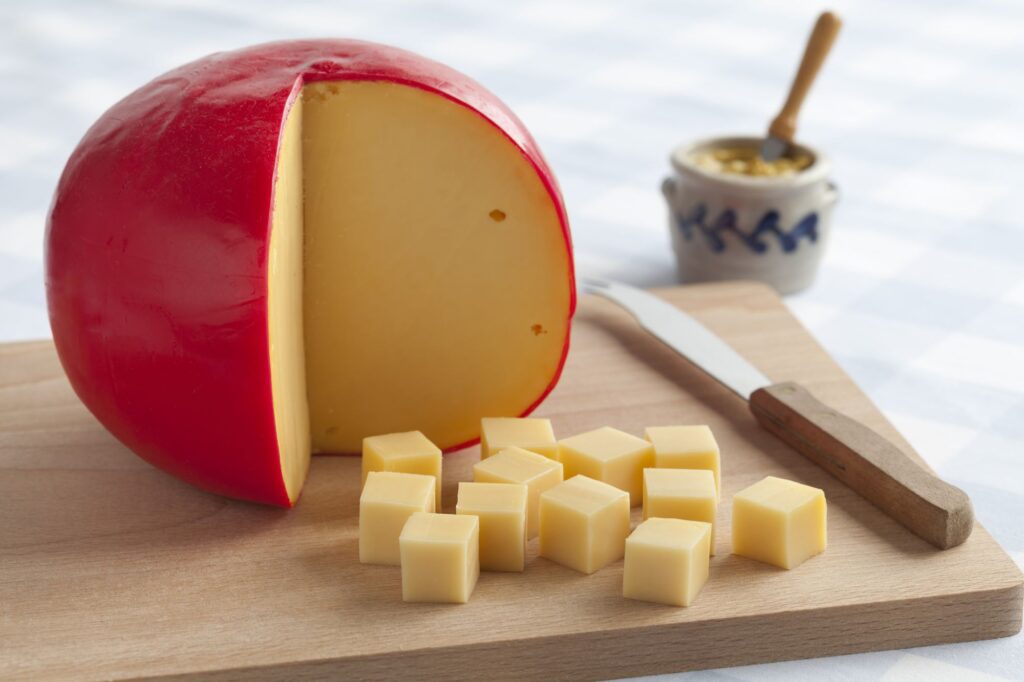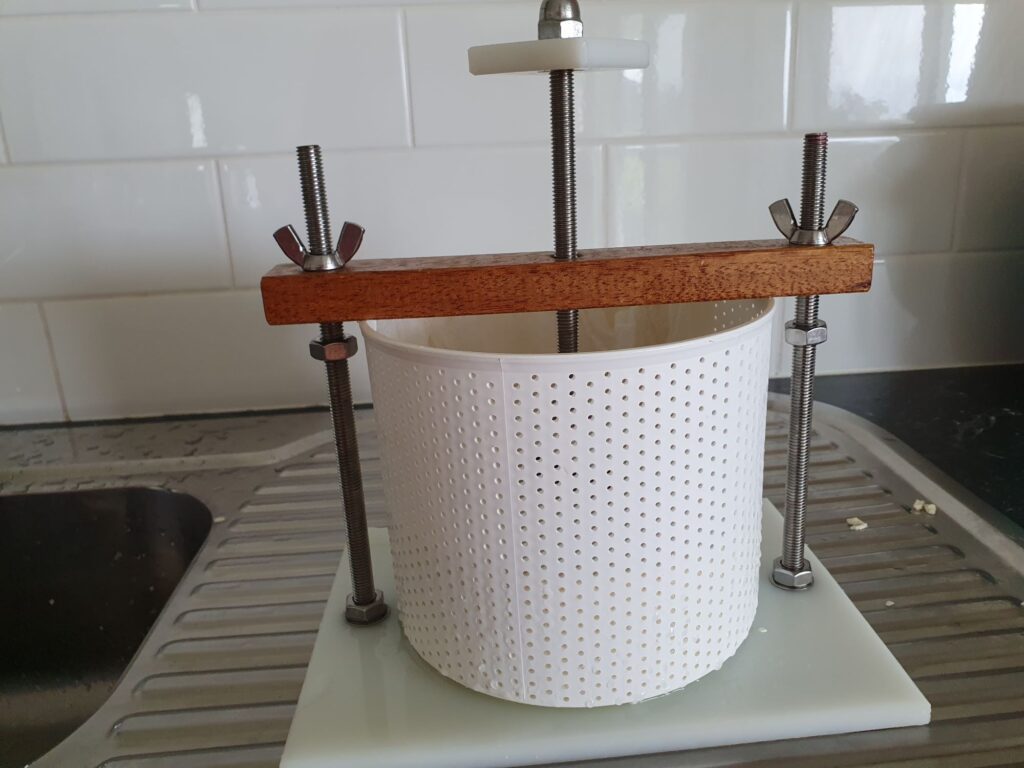
I have always been a big fan of DIY. It makes my life fuller, saves me money, and is more sustainable than mass-consumer culture. One of the things I like to do is make cheese. It might have to do with how much I like to eat cheese. You never know. The Edem recipe below comes from my book, Home Cheese Making in Australia, which should definitely be part of your library.
This Dutch cheese travels well and was often used on long sea voyages. Traditionally, it is round, and the joke was that if you did not want to eat the cheese, you could use it
instead of a cannonball. All jokes aside, it is a beautiful cheese with a closed texture
accompanied by small eyes. Modern Edam is not as dense as its ancestor and is a semi-hard cheese. When young, they are mild and sweet, sharpening with age.
Ingredients:
- 8 litres of reduced-fat milk
- ¼ teaspoon of calcium chloride diluted in ¼ cup of non-chlorinated water
- Mesophilic hard curd cheese starter culture (see the packet for the amount to add)
- ¼ tablet of rennet or ½ teaspoon of liquid rennet diluted in ¼ cup of non-chlorinated
- water
- 1.5 litres of non-chlorinated water heated to 60°C.
- 450 grams of cheese salt for making brine
- 2 litres of non-chlorinated water for brine
Equipment:
- A stainless steel pot to place your milk in
- A second, larger pot is used to place your first pot in, acting as a water jacket so you can indirectly heat your milk.
- Dairy thermometer
- Stainless steel perforated spoon
- Stainless steel curd knife
- Stainless steel ladle
- Several loose-weave cheese-making cloths
- Large stainless steel or enamel colander
- Cheese basket and follower
- Cheese press
- Wooden cheese board or cheese mat
Instructions:
- Place your milk into a large stainless steel pot, and then place this pot into your second, larger pot with water in it to act as a water jacket. Add your calcium chloride
- and mix in well.
- Using indirect heat, slowly heat your milk to 32°C. Add your starter culture and stir gently, mixing in well. Cover and allow to ripen for 30 minutes.
- Add your rennet solution to the milk and stir gently, using an up-and-down motion for one minute, ensuring that the rennet is evenly distributed throughout the milk.
- Allow the milk mixture to rest for one hour while maintaining the temperature at 32°C.
- Check for a clean break. If the curd is not firm enough, leave it for another five minutes and check again.
- Once the curd is firm enough and gives a clean break, cut it into one to one-and-a-half centimetre cubes. Let the cubes rest for five minutes.

- Maintain the temperature of the curds and whey at 32°C and stir gently for 30 minutes. Let the curds rest for five minutes.
- Drain about ⅓ of the whey from the pot, reserving the whey for later use. Replace this whey with an equal amount of your non-chlorinated water, which has been heated to 60°C. to bring the temperature of the curds to 37°C.

- While maintaining the temperature at 37 °C, stir continuously for 30 minutes. Let the curds rest for five minutes.
- Drain off the whey down to the level of the curds, again reserving the whey for later use.
- Heat the reserved whey to 50°C and set aside.
- Line your cheese basket or mould with your loose-weave cheese-making cloth and ladle your curds into the basket or mould.
- Fold the excess cheesecloth over the top of the cheese and place your follower on top. Press at 10 kilos for 30 minutes.

- Remove the cheese from the mould and carefully peel away the cheesecloth. Place the cheese in the pot of whey heated to 50°C and let it soak for 30 minutes, turning it over after 15 minutes.
- Remove the cheese from the heated whey, re-wrap it in a fresh cheesecloth, place it back in the mould, and press at 22 kilos for six hours.
- Turn the cheese over, redress it with fresh cheesecloth, and press it at 22 kilos for another six hours.
- Make up a brine bath with 450 grams of cheese salt and two litres of non-chlorinated water. Remove the cheese from the mould and carefully peel off the cheesecloth. Soak the cheese in the brine bath for 12 hours, turning it over after six hours. Sprinkle a little salt on the top of the floating cheese while it is in the brine bath.

- Remove the cheese from the brine bath and pat it dry with a sterile cheese-making cloth. Place the cheese on a clean cheese board or mat and let it air dry at room temperature for 2-3 days, turning your cheese daily.
- Once your cheese is dry to the touch, wax your cheese and age it in your cheese cave at 10 °C to 12°C for four to eight weeks. Edam is traditionally waxed with red wax.
- Alternatively, you may vacuum pack your cheese.
Cheese making is such a peaceful activity. It is a time to let go of the world’s problems and enjoy stress-free downtime. The science of cheese making is magic. My fascination with this ancient craft will never end. There will always be another cheese to make, like there is always another wine to drink, another song to sing, and another dance to dance.
As always, live well.
Valerie